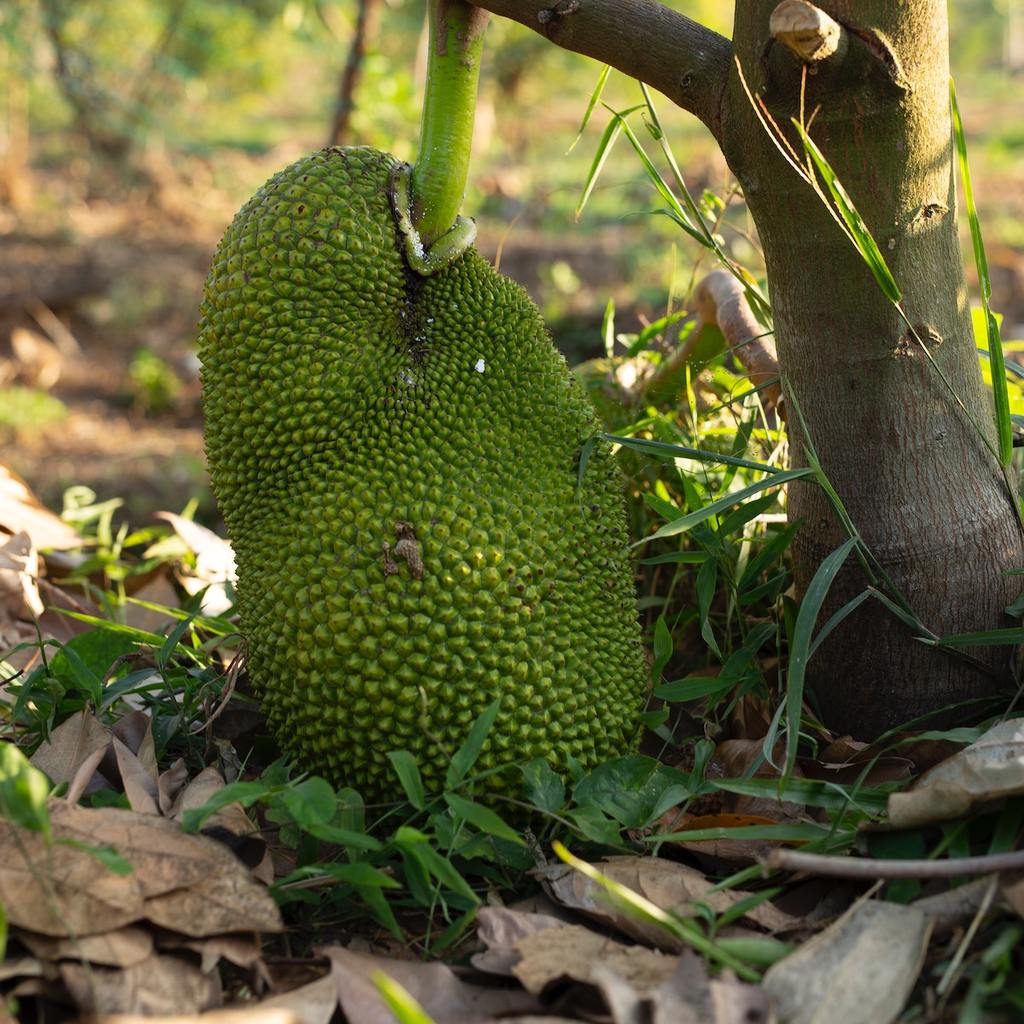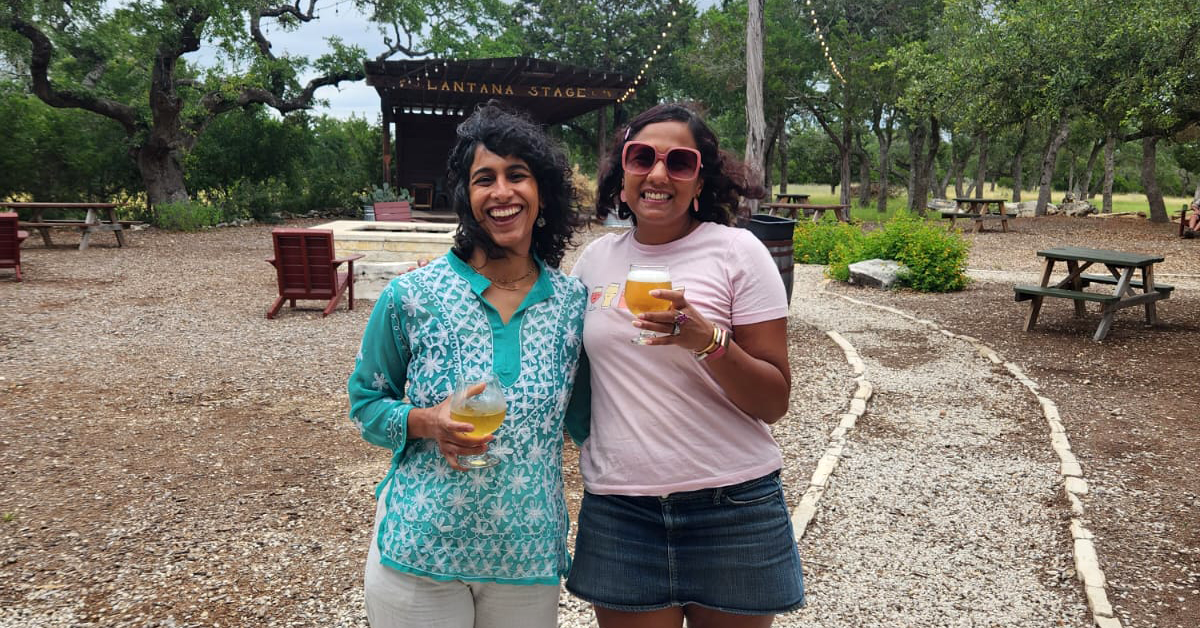Sarah Nadeem is the first South Asian female brewery owner in the U.S. Opening Misfit Outpost in Houston in 2021 is a huge personal achievement for Nadeem. But a thought lingers: South Asians own fewer than 10 breweries in the U.S.
The last two years of co-owning Misfit Outpost with Juan Sanchez have sometimes felt lonely. With the amount of South Asians who call the country their home, it can be confusing as to why there aren’t more.
There are approximately 5.4 million people of South Asian heritage currently living in the U.S., with ancestry ranging from Bangladesh, Bhutan, India, Nepal, Pakistan, Sri Lanka, and the Maldives. South Asians comprise approximately 29% of the Asian American and Pacific Islander (AAPI) population of the U.S. They are increasingly visible as business leaders and public figures, from former Twitter CEO Parag Agrawal to U.S. Vice President Kamala Harris.
Yet in the beer industry, there is a minimal presence, with just a handful of South Asian brewery owners out of the 9,000 breweries in the U.S. There are approximately 80,000 Indian restaurants in the U.S. according to the Indian Eagle, which is roughly 8% of the estimated one million restaurants in the U.S. according to data from 2020. There is demand and supply for the flavors of South Asian cuisine in the American market, and a small group of South Asians within the industry are working to attract that demand to the beer world.
A hangover of history
There is a history to contend with. Until recently, craft beer was not a drink of choice for South Asians in the U.S. or the Indian subcontinent.
Although South Asians have had their regional forms of alcohol, including arrack and toddy, going back millennia, beer was brought to most South Asian countries as part of colonization by the British.
Many of the breweries they set up are still operational, and the big-name macro lagers they produce, like Cobra, Kingfisher, and Lion Lager, still dominate market share in the subcontinent. Still, India’s current craft beer boom indicates a significant change in mindset towards beer and brewing.
Pre-existing conceptions about the drinking culture around beer and a lack of understanding of craft beer culture can cause internal pressures within our communities.
For Nadeem at Misfit Outpost, one of her “biggest cultural challenges of being a Pakistani woman in the beer industry is that most of my close family and friends think I should be married with kids, yet here I am talking about beer and brewing,” she says, explaining that many members of her family still don’t know about her career.
“I’ve gotten a lot of unfollows and weird remarks from the South Asians that I’ve gone to high school or college with,” she adds, highlighting the lack of understanding around craft beer in some sections of the South Asian diaspora.
From the subcontinent to the diaspora
But this is changing. Ajay Nagarajan, CEO at Windmills USA in Dallas, learned to brew in the U.S. but opened his first branch of Windmills in Bangalore in 2012 before returning to launch his American taproom.
Windmills was only the third craft brewery to open in Bangalore, a city now boasting over 60 breweries, a dynamic slowly feeding into the diaspora. Nagarajan created Windmills USA based on his Bangalore taproom: it is a fusion of Indian food and craft beer of high quality in a welcoming environment for all.
“After eight immensely successful and category-defining years of operating Windmills in Bangalore, India, we set out to build a brewery in the Dallas area, to have a foot in the USA, the home of craft beer innovation, so that we can stay connected to the craft beer universe on the other side of the planet and bring new styles, technologies, ingredients to India, which otherwise would be impossible,” says Nagarajan. “Sharing ideas and cultures improves both outlets and keeps our staff excited about travel and communicating with a different part of the world — cross-pollination of ideas is a phrase I often use.”
Nagarajan explains how having a brewery in the U.S. has offered the opportunity for significant innovation at his Bangalore location. “[In Bangalore] We were the first and only ones to use hop extracts like Spectrum from Barth Haas in India; newer hop varieties and yeast strains are also being used in India, which otherwise would be impossible.”
Conversely, in the U.S., Nagarajan capitalizes on the opportunity to bring popular Indian flavors to the beer scene. “We experiment with various tropical fruits and spices from India, leading to beers like chai brown ale and mango-pineapple saison, and the South Asian Beer Club collaboration Jackfruit Lager,” he says.
Naagarajan’s Dallas location in Frisco benefits from having a large South Asian community, who make up close to 60% of Nagarajan’s clientele, but the food and drink menu, mixing a full tandoor grilled kebab menu with Indian bread and classic Texas dishes, is designed to appeal to all clientele.
“Breweries are always fantastic meeting places, and best is the best social lubricant,” he says. And what better way to introduce these two parts of the world than with a fusion of both cultures into the food and beer served?
Creating spaces for conversations
Despite some progress, South Asians remain in tiny numbers in the industry. When British Sri Lankan beer writer Ruvani de Silva (author of this piece) first began to notice how few people in the beer world looked like her, she wanted to find a way for South Asians into beer to gather, chat and support one another, so she launched the South Asian Beer Club project on Twitter and Instagram, connecting beer folks of South Asian heritage to share experiences, support each other’s projects and learn from one another.
Writing articles for publications including Good Beer Hunting, VinePair, and Beer Is For Everyone, as well as Pellicle in the UK and Brewer World in India, de Silva began to build a community of beer drinkers and industry professionals of South Asian heritage, or with an interest in South Asians in beer to spread the word and share news and stories, and build interest in South Asian-owned breweries producing beers showcasing traditional South Asian flavors.
Bringing the community together
The next step in the project for de Silva was curating the first-ever all-South Asian panel at a U.S. beer event for the Chicago Brewseum’s 2021 Beer Culture Summit. The Brewseum is “a non-profit dedicated to telling the global story of beer,” making it the perfect fit for this discussion, which brought together South Asians in beer from across the U.S. to share their experiences and expertise.
The discussion ranged from barriers to entry to brewing with South Asian ingredients to ways of attracting more South Asians into the craft beer world. It was extremely well-received, so much so that it was re-shown as part of the following year’s summit, and has helped to raise the profile of the participating breweries, Windmills USA, Azadi, Other Desi and Trace, as well as helping to overcome stereotypes and misconceptions and create a greater understanding of the possibilities South Asians can bring to the beer world.
The first South Asian collaboration beer
The South Asian Beer Club’s most recent development has been to highlight one of those possibilities — introducing new flavors. The first South Asian Beer Club collaboration beer, in partnership with the Brewseum, just launched: Subcontinental Jackfruit Lager.
Liz Garibay, executive director at the Brewseum, said, “The Brewseum has always tried to be a platform for lesser heard voices, and our goal is to always amplify people, their beer history, and culture stories. We were honored to continue this journey with Ruvani and the South Asian Beer Club and the four unique breweries as part of our cultural beer collab initiative.”
The collaboration brought together four breweries with South Asian ownership: Houston’s Misfit Outpost, Windmills USA in Dallas, Roughhouse Brewing in San Marcos, and Texas and Chicago’s Azadi Brewing [who plan to tweak the recipe due to ingredient constraints]. The group collaborated over Zoom to choose a flavor representative of their shared South Asian heritage, popular across the region, and would offer an introductory taste of a specifically South Asian flavor to drinkers who may not have tried it before.
Jackfruit is a culturally significant fruit across South Asia, where it is popular in a range of dishes. Traditional medicines use the plant’s fruit, leaves, and bark. Hindu and Buddhist ceremonies use jackfruit wood.

It is also the national fruit of Bangladesh and the state fruit of Tamil Nadu and Kerala in India, where Hindu priests carve the fruit’s wood into ornate avani palaka plank. Jackfruit is an antifungal and anti-carcinogenic. The fruit is enjoyed raw and fresh from the tree, made into a juicy, meaty curry, or ripe as a sticky dessert. For de Silva, enjoying her beloved Auntie’s homemade jackfruit curry was always a highlight of visits to her Sri Lankan family. Her father was delighted to hear that she was involved in making a jackfruit beer and excited to hear that such a thing was possible.
The beer was released across the three Texas locations in May as part of AAPI Heritage Month and will release in Chicago over the summer. The blend of jackfruit’s sweet-savory full-bodied notes of mango, banana, and pineapple and a light, crisp lager base made for a delicious beer that fully represents the project goals.
New possibilities for the industry
As the work of the South Asian Beer Club has showcased, South Asians have much to bring to the craft beer world. It is an untapped consumer market and an underexplored resource of new flavors and styles such as handia, rice beer, or the jackfruit lager collaboration.
Bringing more South Asian flavors into the beer industry makes sense, with craft beer fans always looking for the next big thing. Introducing flavors like cardamom, jaggery, turmeric and Alphonso mango into beer, as well as styles like basmati rice lager, South Asians are slowly making their mark in the beer world.
As new South Asian-owned breweries like New York’s Rupee Beer join the market, customers are slowly finding more opportunities to support them, and hopefully, with support from organizations like the Brewseum, members of the South Asian Beer Club will be able to thrive.
For Nadeem, the collaboration was a significant step in raising the profile of South Asians in beer and creating a sense of belonging and community.
“The Subcontinental project was very important to me because I met other people who were desis and in the beer industry. [I received] no judgment from them, and it felt good,” she says.
South Asian Beer Club will continue to support and promote South Asians in the industry and will hopefully go on to have more collaborative projects in the future.
*Some quotes have been edited for clarity


